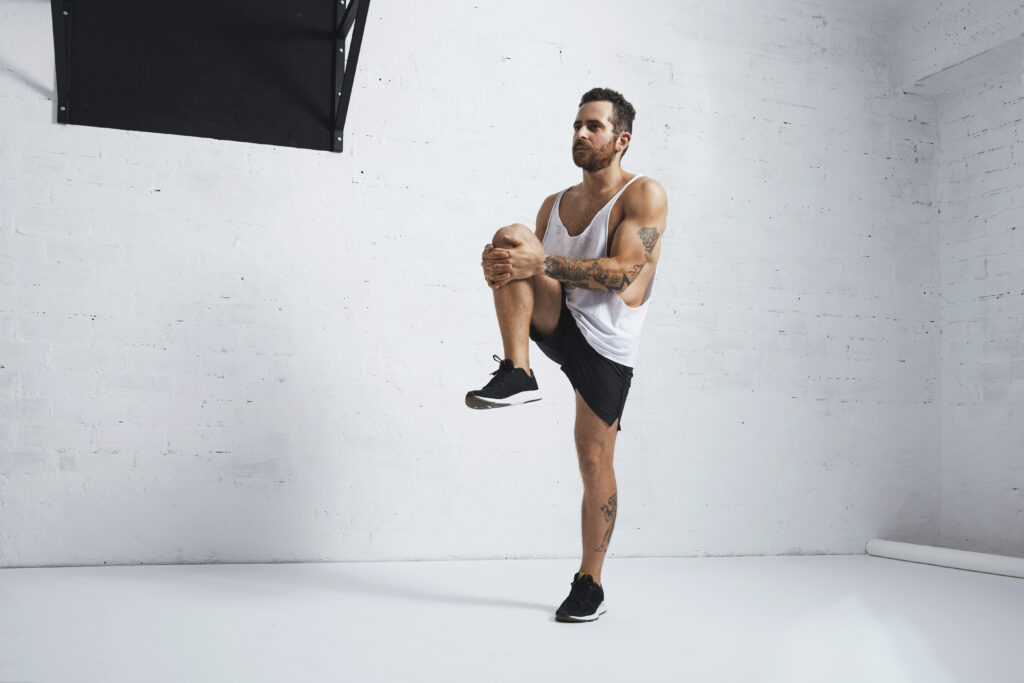Stretching is a foundational aspect of fitness. Whether you’re a strength athlete, runner, or general gym-goer, flexibility training is critical not just for performance but for injury prevention and long-term joint health. One of the most debated topics in this realm is how long you should hold a stretch to truly make a difference — especially when the goal is to lengthen connective tissue like fascia, tendons, and ligaments. Is 30 seconds enough? Or do you need to stretch for 180 seconds to see measurable gains?
Let’s take a look at what current scientific research suggests regarding optimal stretch duration, particularly when targeting fascial release and tissue lengthening.
Understanding Connective Tissue: Fascia, Tendons, and Ligaments
Before diving into timing, it’s important to understand what’s being stretched.
- Fascia is the thin, web-like connective tissue that surrounds muscles, bones, and organs. It plays a vital role in flexibility, movement efficiency, and structural support.
- Tendons connect muscle to bone, transferring force during contraction.
- Ligaments connect bone to bone, providing joint stability.
These tissues are dense, collagen-rich, and not as elastic as muscle fibers, which means they require more sustained loading to adapt and lengthen over time.
What the Science Says About Stretch Duration
Studies have compared various static stretching durations — 30, 60, 90, 120, and even 180 seconds — to assess their effect on muscle and connective tissue extensibility.
A 2020 systematic review in Frontiers in Physiology found that stretching durations of 60 seconds or more significantly improved flexibility and range of motion compared to shorter bouts. The benefit appeared dose-dependent: the longer the stretch, the greater the result — up to a point.
Meanwhile, a 2018 study in Journal of Sports Medicine and Physical Fitness examined chronic static stretching protocols and found that 90–120 seconds per stretch per muscle group yielded better long-term increases in flexibility than shorter 30-second holds.
Additionally, research by Wilke et al. (2018) emphasized that to affect fascial tissue, stretches must be sustained for at least 90 seconds or longer. This is because fascia remodels more slowly than muscle due to its collagen structure.
Best Practice: 90 to 120 Seconds for Fascia and Connective Tissue
Based on current findings, here are some science-backed takeaways:
- 30 seconds: Good for warming up and general flexibility; affects muscle but not connective tissue as effectively.
- 60 seconds: More effective, particularly when repeated in multiple sets.
- 90–120 seconds: Optimal for targeting fascia, tendons, and ligaments, promoting tissue remodeling and lasting flexibility.
- 180 seconds: May offer additional benefit, but gains tend to plateau beyond 2 minutes. Also, prolonged holds may lead to discomfort or diminished return in some populations.
Incorporating multiple rounds of 60-90 second holds per muscle group may be more sustainable and equally effective as a single long 180-second hold.

Static vs. Dynamic Stretching: When Duration Matters Most
It’s also important to differentiate static stretching (holding a position without movement) from dynamic stretching (movement-based flexibility). Static stretching is where hold time is critical, particularly post-workout or as part of a dedicated mobility session.
Dynamic stretching, used in warm-ups (see photo above), is typically shorter and more movement-oriented — not designed to impact connective tissue the same way.
Summary: Stretching for Real Results
If your goal is to lengthen fascia and improve mobility in ligaments and tendons, science suggests holding your stretch for at least 90 to 120 seconds per muscle group. This duration provides the sustained mechanical tension needed to initiate changes in dense connective tissue. While 30 to 60 seconds might be adequate for muscle flexibility or pre-exercise prep, they fall short in remodeling fascia.
Incorporate longer static stretches into your cool-down post workout.
Jefit: Your Ultimate Strength Training Companion
If you’re committed to building muscle, gaining strength, and tracking your progress effectively in 2025, the Jefit strength training app is the essential tool to help you crush your fitness goals. With over 20 million downloads and 12+ million active users, Jefit ranks among the best strength training apps available today. Named the Best Fitness App of 2024 and featured in Men’s Health, PC Magazine, and USA TODAY, Jefit combines expert-built workout programs, advanced gym performance tracking, and a supportive community to help you stay accountable and motivated. Whether you’re looking to follow a scientifically-backed muscle-building plan, monitor your lifting progress, or optimize your training intensity, Jefit gives you everything you need — all in one place.
- Why Lifters Choose JEFIT App for Real Strength Gains - December 3, 2025
- Nutrition Trends Bodybuilders are Talking About in 2025 - November 26, 2025
- Smart Strength Training Backed by Jefit Data - November 19, 2025
